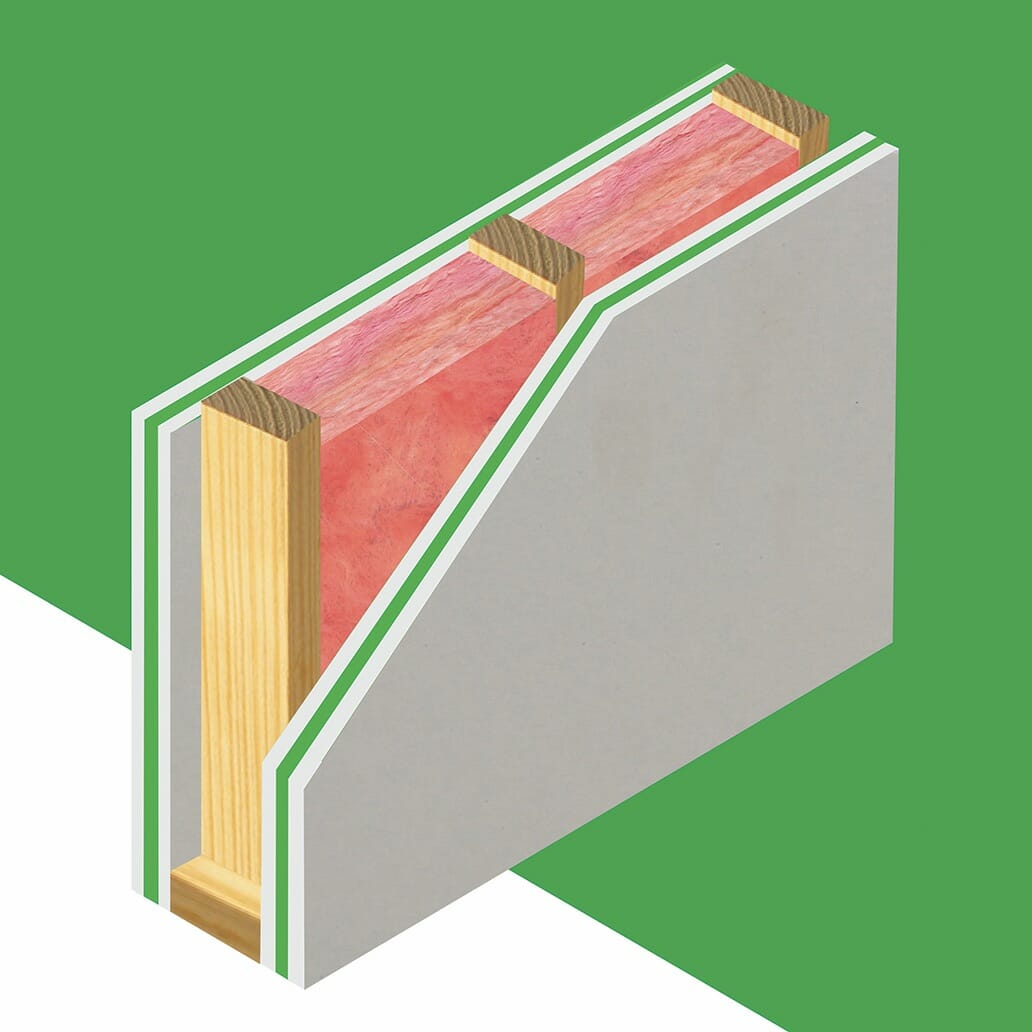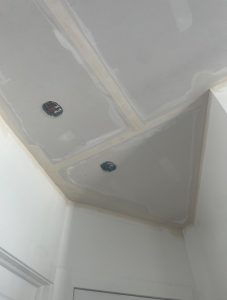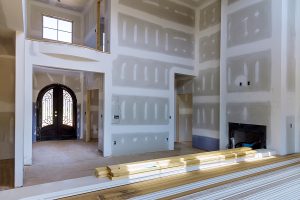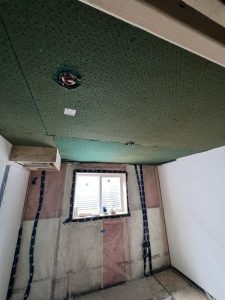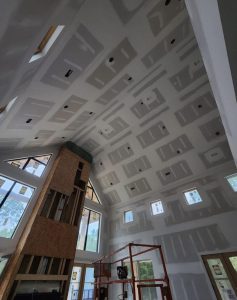Noise pollution can be a significant issue in both residential and commercial spaces. One effective way to combat this problem is through drywall soundproofing. This guide will explore the benefits, techniques, and materials needed to soundproof your walls using drywall.
Why Drywall Soundproofing?
Drywall soundproofing is popular due to its cost-effectiveness and ease of installation. Properly soundproofed drywall can significantly reduce noise transmission, creating a quieter and more comfortable environment.
Understanding Sound Transmission
Before diving into drywall soundproofing, it’s essential to understand how sound travels:
- Airborne Sound: This type of sound travels through the air and can be blocked by dense materials.
- Structure-Borne Sound: This type of sound travels through building materials and requires isolation techniques to be effectively mitigated.
Key Techniques for Drywall Soundproofing
Mass Addition
- Extra Drywall Layers: Adding additional layers of drywall can increase the mass of your walls, making it harder for sound to pass through.
- Green Glue: Use a soundproofing compound like Green Glue between layers of drywall. This compound dampens sound vibrations.
Decoupling
- Resilient Channels: Install resilient channels between the drywall and wall studs. These channels create a gap that reduces sound transmission by decoupling the drywall from the structure.
- Double Stud Walls: Constructing a double stud wall can create an air gap, further reducing sound transmission.
Damping
- Soundproof Drywall: Invest in specially designed soundproof drywall, which contains damping layers that absorb sound.
- Acoustic Sealant: Seal all gaps and cracks with an acoustic sealant to prevent sound from leaking through small openings.
Absorption
- Insulation: Fill the wall cavity with soundproofing insulation like mineral wool or fiberglass. These materials absorb sound, reducing its transmission.
Materials Needed for Drywall Soundproofing
- Drywall Sheets: Standard or soundproof drywall
- Green Glue: Soundproofing compound
- Resilient Channels: For decoupling
- Acoustic Sealant: To seal gaps
- Insulation: Mineral wool or fiberglass
- Screws and Fasteners: For installation
Step-by-Step Guide to Soundproofing with Drywall
1. Prepare the Area
Before starting any soundproofing project, proper preparation is crucial. Begin by removing any existing drywall if necessary. Clean and inspect the wall studs for damage, ensuring they are structurally sound.
2. Install Insulation
Filling the wall cavities with soundproofing insulation is a critical step in reducing sound transmission. Materials like mineral wool or fiberglass are excellent choices due to their sound-absorbing properties. Ensure the insulation fits snugly within the wall cavity without leaving gaps.
3. Apply Resilient Channels
Resilient channels are essential for decoupling the drywall from the wall studs, creating a gap that reduces sound transmission. Attach the resilient channels to the wall studs, following manufacturer instructions. Ensure they are securely fastened and evenly spaced.
4. Hang the First Layer of Drywall
Screw the first layer of drywall onto the resilient channels. This layer provides the initial barrier against sound. Use standard drywall sheets or opt for soundproof drywall for enhanced performance. Make sure the drywall is securely attached and covers the entire wall surface.
5. Apply Green Glue
Green Glue is a soundproofing compound that dampens sound vibrations. Apply a generous amount of Green Glue to the back of the second layer of drywall. Spread it evenly using a caulking gun or putty knife. Green Glue is effective because it remains flexible, absorbing and dissipating sound energy.
6. Hang the Second Layer of Drywall
Attach the second layer of drywall over the Green Glue. The added mass and damping properties of Green Glue significantly improve soundproofing. Screw the drywall securely to the resilient channels, ensuring a tight fit. Stagger the seams between the first and second layers to minimize sound leakage.
7. Seal the Edges
Use acoustic sealant to seal all edges, gaps, and cracks. This step is crucial for preventing sound from leaking through small openings. Apply the sealant along the edges of the drywall, around electrical outlets, and any other penetrations. Ensure a complete and airtight seal.
8. Finish the Wall
Once the drywall is securely in place and sealed, finish the wall as desired. Tape, mud, and sand the drywall joints to create a smooth surface. Paint or apply wall coverings to match your interior decor. A well-finished wall not only looks great but also contributes to effective soundproofing.
Additional Soundproofing Tips
To maximize the effectiveness of your drywall soundproofing, consider these additional tips:
Focus on Weak Points
Even the best soundproofing can be compromised by weak points. Pay special attention to areas like electrical outlets, windows, and doors. These points can allow sound to leak through if not properly addressed. Use acoustic sealant around outlets and consider soundproofing solutions for windows and doors.
Use Soundproof Curtains and Blinds
Windows are often a significant source of noise transmission. Installing soundproof curtains or blinds can help reduce noise infiltration. These specially designed window treatments are made from dense materials that block and absorb sound, enhancing the overall soundproofing of your room.
Soundproof Doors
Doors are another common weak point in soundproofing efforts. Consider installing solid core doors, which are denser and more effective at blocking sound than hollow core doors. Additionally, use weatherstripping around the door frame to create an airtight seal, preventing sound from leaking through gaps.
Professional Help
If you’re unsure about the process or want to ensure the best results, consider hiring a professional soundproofing contractor. Professionals have the expertise and experience to implement soundproofing techniques effectively, saving you time and ensuring optimal performance.
Conclusion
Drywall soundproofing is an effective and affordable way to reduce noise transmission in your home or office. By following the techniques and steps outlined in this guide, you can create a quieter and more comfortable environment. Whether you’re a DIY enthusiast or prefer professional help, understanding the basics of soundproofing will help you achieve the best results.
For more tips and in-depth guides on soundproofing, stay tuned to our blog! We’ll continue to provide valuable information to help you create the perfect acoustic environment in your space. From advanced soundproofing techniques to product recommendations, we’re here to support your journey to a quieter and more serene living or working space.
FAQs
Q: How effective is drywall soundproofing?
A: Drywall soundproofing can be highly effective when done correctly. By adding mass, using damping compounds like Green Glue, and incorporating decoupling techniques such as resilient channels, you can significantly reduce noise transmission.
Q: Can I soundproof an existing wall without removing the drywall?
A: Yes, it’s possible to soundproof an existing wall without removing the drywall. You can add additional layers of drywall with Green Glue, install resilient channels over the existing wall, or use soundproofing panels that can be mounted directly onto the wall.
Q: How much does it cost to soundproof a room with drywall?
A: The cost of soundproofing a room with drywall varies depending on the size of the room and the materials used. On average, you can expect to spend between $1,000 and $2,500 for a standard-sized room. This estimate includes the cost of drywall, insulation, Green Glue, resilient channels, and labor if you hire a professional.
Q: Is soundproof drywall worth the investment?
A: Soundproof drywall is worth the investment if you need maximum noise reduction. It is specifically designed to absorb and block sound, offering better performance than standard drywall. However, it is more expensive, so consider your budget and the level of soundproofing required for your space.
Q: Can I soundproof a ceiling with drywall?
A: Yes, you can soundproof a ceiling using similar techniques to wall soundproofing. Adding layers of drywall, using resilient channels, and applying Green Glue can help reduce noise transmission through the ceiling. Additionally, consider insulating the ceiling cavity to enhance sound absorption.
By following these guidelines and tips, you can effectively soundproof your space with drywall, creating a more peaceful and enjoyable environment. Happy soundproofing!

